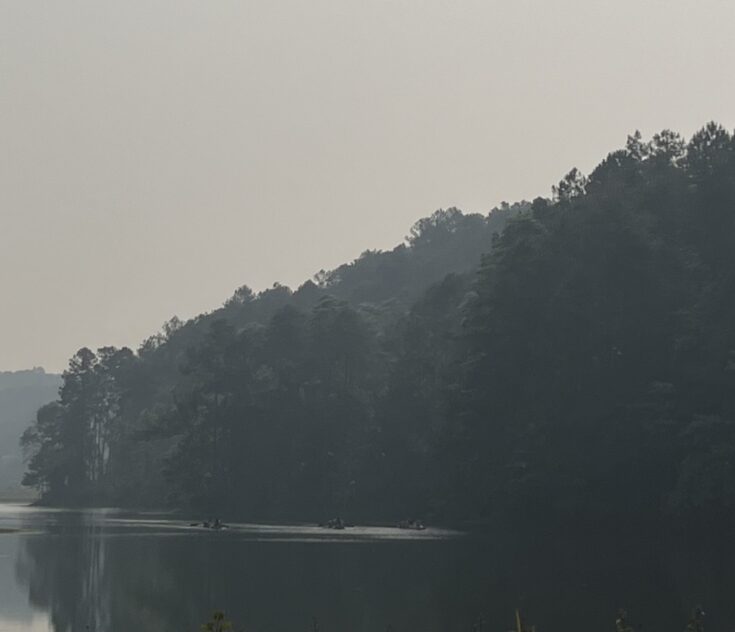
Every year during March to April, many provinces in the Northern region of Thailand have been known to go through the “Burning Season” and have the areas covered in PM2.5 air pollution.
To proclaim, you can see the “Chiang Mai is ranked the worst air quality in the world” making the headlines week after week in both national and international media.
The Burning Season refers to when farmers start to burn their lands for agricultural purposes. Assoc. Prof. Dr. Wisanu Attawanich, lecturer at the Faculty of Economics Kasetsart University, said the highest numbers of hot spots are caused by rice fields burning, followed by corn and sugarcane fields burning.
“At present, there are no concrete measures intended to significantly reduce burning from the government,” added other academics from the university.
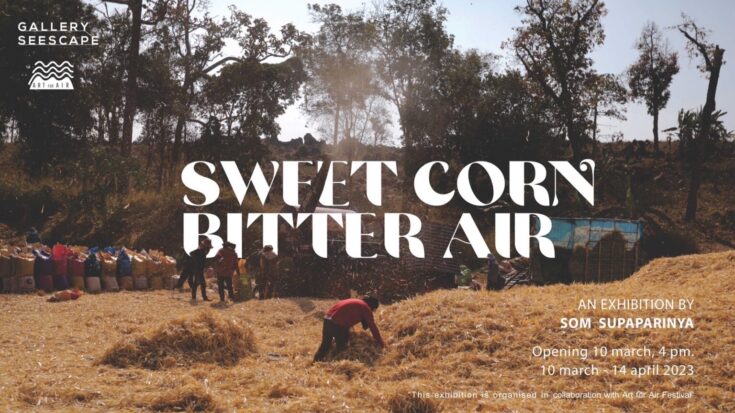
Therefore, this specific issue was recently brought to light, once again, through an art exhibition “Sweet Corn, Bitter Air” by Som Supaparinya in collaboration with the “Art for Air (2)” project.
The exhibition was held at Gallery Seescape in Chiang Mai as Supaparinya presented her documentary photos she had taken during her research on corn farming and how it affects people living in the region.
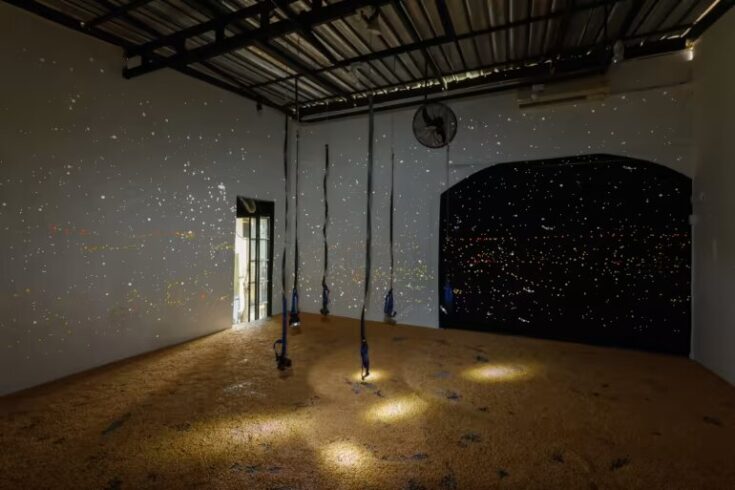
Inside, it included images of cornfield waste and aerial shots of Chiang Mai at night, reflecting in yellow, orange and white dots like star constellations. Plus, there were hard corn kernels layered across the floor, wrote Max Crosbie-Jones.
According to Supaparinya, she wanted this exhibition to ignite ideas in all viewers that one of the main factors creating the current environmental crisis may be connect with Thailand’s growth in corn farming.
The “Art for Air – The Art Projects for Breaths” has been cooperatively run by creative people from many fields from Chiang Mai and nearby provinces.
It aims to combine artistic and cultural points of view into bringing more attention to the air pollution problems and leading to the solutions at last.
However, the members participating in this movement have highlighted that they all realize they cannot solve the crisis the country is facing alone.
“We can’t solve it individually but instead structurally.”
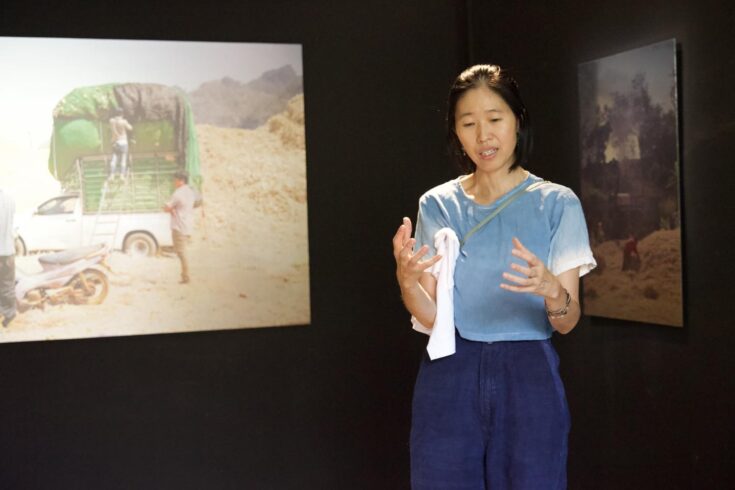
Supaparinya said during her exhibition’s opening that, “We want this problem to be heard louder and louder, and in every way possible.”
“We are trying to make the government not just listen but do something,” she added.
Clearly, this was not the first time someone urged the Thai authorities to join in the process of tackling the country’s environmental problems more actively.
In fact, this particular statement can be linked to the Thai-Swedish model and environmentalist, Maria Lynn Ehren’s opinion that she gave during the YouTube show, “Open QuestionTH (ถกถาม)” on the episode 15 in which the main topic discussed was climate change.
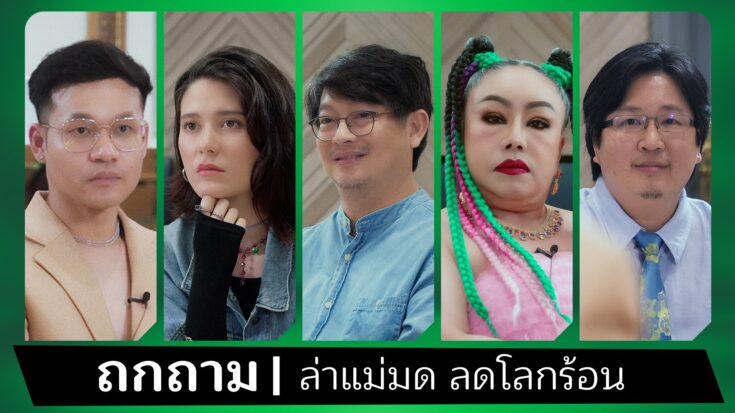
Maria was joined by many relevant public figures from Thailand in the show hosted by Angkriz English academy founder, Kanatip (Loukgolf) Soonthornrak including a political activist Sombat Bunngamanong (Nuling), Assistant Professor Dr. Puey Ounjai of Department of Biology, Faculty of Science from Mahidol University, and Leena Jungjunja.
They discussed several challenges Thailand is now dealing with, from carbon emission to plastic uses, to sustainable agriculture, and other causes of the air pollution like wildfires, fossil fuel uses, and hot spots in neighboring countries such as Myanmar, Laos, Cambodia, etc.
“When I first started to be more interested in global problems like climate change, air pollution, and water pollution, I was also having the idea that in order to make better differences, I need to start with myself, by changing the way I live,” Maria said.
“But overtime, I have realized that the idea of ‘starting with yourself’ may be another way we all use to avoid seeing the real issues.”
“What about vital policies from the government aiming to fix these problems? What about all the large companies that are considered as big polluters in Thailand? Don’t they also need to take responsibilities and take actions as well?, she asked.
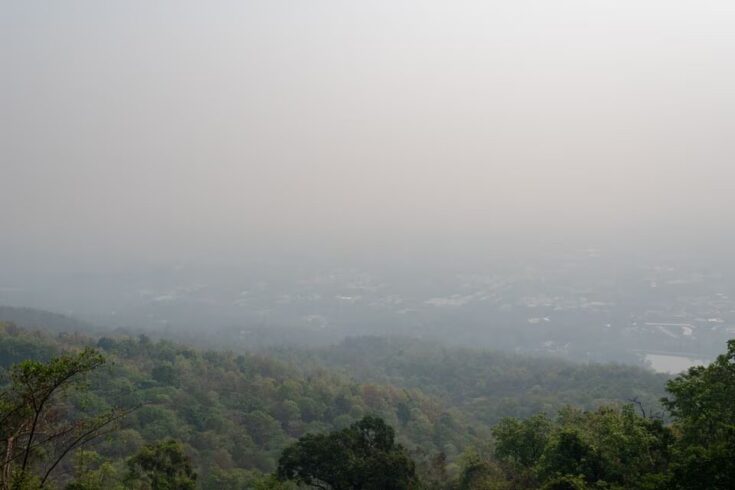
The more we dig deep into PM2.5 issues and its effects, the louder it gets that “we can’t solve it individually but instead structurally.”
Surely, impacts will be made if we have people organize more art exhibitions, advocate and be the voices of the unheard, or start more fundraising to help with social and environmental issues in the future.
But more effective ways in solving these problems for the long term require immediate attention, structural policies, and action plans from “the one who is in power.”
By approaching the challenges more constructively and collaborating with related sectors if needed, these will help create the bigger impacts.
After all, it is not the people’s responsibility to fight for their fundamental rights like clean air, instead it is the government’s to guarantee that those rights are provided and protected.
Sources:
- https://www.artforair.org/
- https://www.artforair.org/gallery-seescape/
- https://asia.nikkei.com/Life-Arts/Arts/Thai-artists-bring-creativity-to-fight-against-pollution?fbclid=IwAR0I0vRbs49UZsSETK6MwapommZvv6vG2pcxS_HwplSan1beGZmM5axLJR0
- https://www.bangkokpost.com/thailand/special-reports/2555489/chiang-mai-suffers-rebound-from-haze-problem
- https://www.bbc.com/thai/articles/crgzp3p1vp2o
- https://www.bbc.com/thai/thailand-61080626
- https://www.bbc.com/thai/articles/crgzp3p1vp2o
- https://www.youtube.com/watch?v=sNxtvH9D1G8&themeRefresh=1
- https://www.youtube.com/watch?v=MbVz1VgGrN8





